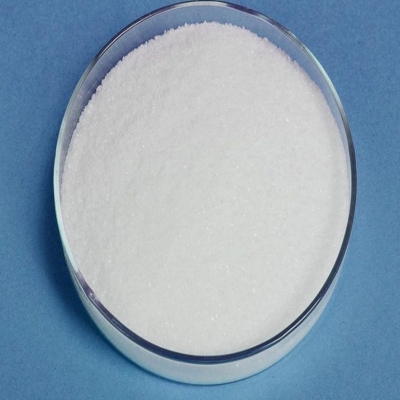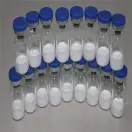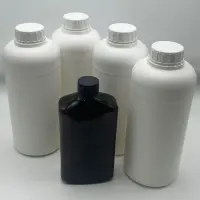-
Categories
-
Pharmaceutical Intermediates
-
Active Pharmaceutical Ingredients
-
Food Additives
- Industrial Coatings
- Agrochemicals
- Dyes and Pigments
- Surfactant
- Flavors and Fragrances
- Chemical Reagents
- Catalyst and Auxiliary
- Natural Products
- Inorganic Chemistry
-
Organic Chemistry
-
Biochemical Engineering
- Analytical Chemistry
- Cosmetic Ingredient
-
Pharmaceutical Intermediates
Promotion
ECHEMI Mall
Wholesale
Weekly Price
Exhibition
News
-
Trade Service
in China, with a population of 1.4 billion, stroke has become the first major disability and fatal disease among our residents. After stroke, patients tend to leave paraplegia, aphpathy, cognitive dysfunction and other sequelae, or even lose the ability to live on their own, seriously affecting the quality of life. Stroke rehabilitation is one of the most effective methods to reduce disability rate by evidence-based medicine.Recently, Grigg Ingham's Yuda Rehabilitation and the Rehabilitation Medicine Department of Shanghai International Medical Center, which is supported by it, jointly released the 2018-2019 Rehabilitation Clinical Results and Quality Report. The report proves that for stroke patients, rehabilitation during the six-month golden recovery period can greatly improve the effectiveness of functional rehabilitation.The earlier stroke recovery starts, the better the function recoveryAt present, China has 3.5 million new stroke patients per year, of which about 70%-80% need care because of the loss of self-care. Effective rehabilitation training can reduce the functional disability of patients, improve patients' survival satisfaction, speed up the recovery process of stroke, reduce potential nursing costs and save social resources.Stroke recovery time is key. According to statistics, 8 to 12 weeks after stroke is the rapid recovery period of physical dysfunction. If early rehabilitation is carried out within six months of illness, the survival rate of the patient will increase to 97%.“ Health China 2030 planning outline also put forward the "early diagnosis, early treatment, early recovery" concept. In Germany, as early as 2005, 365,000 German stroke patients, or about 45 per cent of the total number of rehabilitations, were reinstatement. By 2020, that number will exceed 417,000.As a pioneer and practitioner of the introduction of German neuro-rehabilitation to China, Grigg Ingham's Department of Rehabilitation and Rehabilitation Medicine at Shanghai International Medical Center, supported by it, has been working since March 2018 to treat Chinese patients using German neuro-rehabilitation standards. The 2018-2019 Rehabilitation Clinical Outcomes and Quality Report, published jointly, uses multiple evaluation criteria for inpatient stroke patients in the Rehabilitation Medicine Department (German Rehabilitation Phase C patients, i.e. those who are not fully free to move in their daily lives) The analysis of clinical data showed that the average EBI improvement rate of patients hospitalized within 6 months of onset was 78.6%, following the German Rehabilitation Standard, the Early Basel Index (EBI), and 28% in this group according to the International Functional Independence Assessment Standard (FIM). Both sets of international standard data are much higher than other stroke patients who have been admitted to hospital for much longer. This fully proves that for stroke patients, rehabilitation treatment during the 6-month golden recovery period can greatly improve the effectiveness of functional rehabilitation.As one of the sponsors of the 2018-2019 Rehabilitation Clinical Outcomes and Quality Report, Professor Shulebo from Germany, who specializes in the field of neurorehabitation and is currently the head of rehabilitation medicine at Yuda, said of the original purpose of the report: "We hope to use clinical data to make more doctors, patients and families realize that the focus of survival after stroke should not only be limited to saving life, but also early and maximized recovery function, improve quality of life, return to society, and live a more meaningful life." ”。 At the same time, he stressed that six months after the stroke can not give up treatment, rehabilitation treatment can still bring benefits.From mode, concept to practice, the characteristics of German neuro-rehabilitationGerman neuro-rehabilitation model is recognized as one of the leading international standards due to its high degree of standardization, high efficiency and high intensity, thanks to a complete hierarchical rehabilitation system, multidisciplinary professional teamwork and comprehensive rehabilitation insurance system. Based on more than two years of experience and experience in Chinese medicine, Professor Shu Lebo summarizes the differences between Chinese and German neurorehabiting.The first is the concept of rehabilitation. Chinese patients prefer passive treatment, and many are pinning their hopes on medical teams and rehabilitation programs. Influenced by Confucianism, the patient's family's understanding of love is mostly to bear and help. In fact, rehabilitation medicine is different from other sciences, in the rehabilitation process, the medical team plays more as an auxiliary, the patient is the main promoter of the recovery of the disease, the German rehabilitation model emphasizes the active participation of patients, the clinical team will guide patients in the treatment process through psychological guidance, emotional support, family education, recreational activities, incentive mechanisms, etc., to maintain the initiative, continuity and motivation in the treatment process, so as to achieve the goal of rehabilitation The German rehabilitation model emphasizes the whole process, through the establishment of a core team meeting system, a project rehabilitation butler system, a concise and efficient data management system platform, etc., to create a complete communication and reporting system, thus ensuring the consistency of multidisciplinary medical teams in clinical diagnosis and treatment standards. Medical teams can help patients develop phased, consistent rehabilitation goals and programmes based on common understanding and understanding, andgroup therapy and personalized life scenario rehabilitation are two highlights of the German rehabilitation model. Group therapy is a group of 3 to 5 patients with similar functional conditions who train together through the therapist's arrangement. The process requires team interaction, mutual assistance and competition to motivate patients to better achieve their recovery goals. In combination with Chinese cultural characteristics, the rehabilitation of The German model emphasizes the importance of personal living conditions and the laws of individual life, and the ultimate goal is whether patients can participate in daily life, family, community and social activities. Personalized life situation rehabilitation came into being, this treatment method is based on the patient's functional level, individual will and life hobbies for training content development, very close to personal life, divided into personal life self-care, personal skills exercise and social participation in the three sections, to help patients independently complete life behavior, step by step back to life.“ We have made a close combination of these characteristics of German stroke rehabilitation with China's national conditions and human characteristics, more than two years to prove the results. In the future, we still need to explore and develop more innovative treatment methods to help more stroke patients establish the correct concept of rehabilitation, early recovery, early return to family and life. Professor Shulebo said.
About Luda RehabilitationYuda Rehabilitation is a rehabilitation brand owned by Bronger Ingham, a German 100-year-old pharmaceutical company, dedicated to bringing the 100-year-old German concept of neuro-rehabilitation and advanced rehabilitation models to countries and regions around the world in urgent need of stroke rehabilitation. In March 2018, in collaboration with Shanghai International Medical Center (SIMC), we have created a rehabilitation medicine department based on German rehabilitation standards, providing high-quality rehabilitation services to more than 300 patients.
(
Bronger Ingeham official website
) References: . Zhang Tong (Writing) - "China Rehabilitation Theory and Practice" - China's Guidelines for Rehabilitation of Stroke (2011 Full Edition) -
"Modern Practical Medicine" - Evaluation of the Effectiveness of Health Education Interventions in The Extension of Care for Patients Discharged from Hospital with Cerebral Infarction 4'
Prognos AG (2017) Die medizinische Rehabilitation Erwerbstätiger - Sicherung von Produktivität und Wachstum, Available: ccessed at 2 November 2017.







